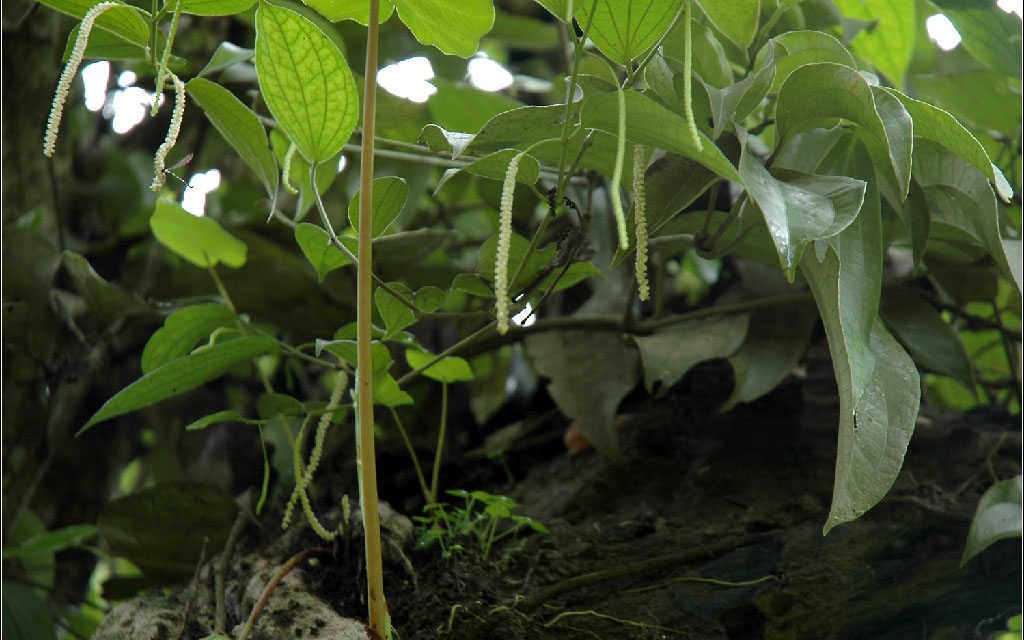|
P.argyrophyllum
| Botany: | A slender, scandent, perennial climbing shrub, dioecious, main stem and branches glabrous, young shoot puberculous; leaves thin, papery when dry, ovate to elliptic, about 12x 7 cm, base round, often cordate in the leaves of the runner shoot, tip acuminate, 5 ribbed at the base, the outer pair of ribs running to two third of the leaf. The inner ones reaching the tip, glabrous or puberculous, younger leaves often minutely hairy, especially along the veins on the lower side of the leaf, silvery scales present on the lower side, petiole about 1-1.5 cm., grooved, glabrous or minutely puberculous. Spikes thin, filiform, pendulous, length highly variable, male spikes 8 -16 cm, female 5-10 cm, glabrous or puberculous. Bracts sessile, adnate and almost confluent with the rachis, obovate to elliptic; stamens three, anther dithecous, carpel single, style absent, ovary oblong, stigma 4- lobed,short, recurved and papillate. Berry ovate, becomes spherical in full maturity, on ripening turns black directly from green, decidous, taste bitter. The scars left by fallen fruits ciliate. Externally similar to P. atenuatum, but differs from it having 5-ribbed nature of leaf base and shorter, greenish white fruiting spike and silvery scales on the underside of the leaves. Flowering May-June; fruiting December- January, Off season flowering common. 2n = 48 |
| Keyfeature: | Leaves 5 ribbed from base | | Distribution: | Western ghats, Coorg & Nilgiris southwards in evergreen forests & shola occurring 500 - 2500 m MSL. |
| |  |
|
|








